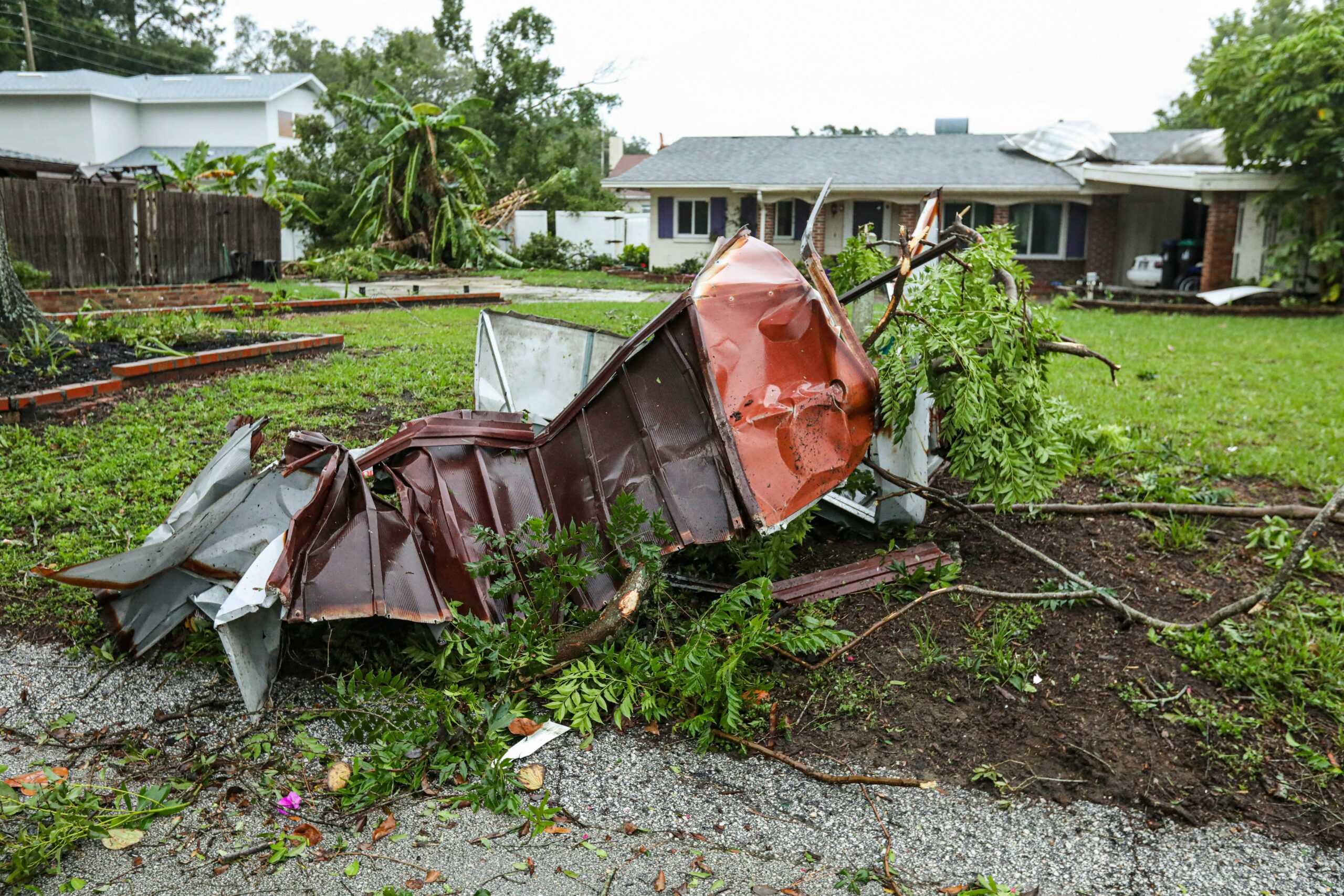Introduction to Tropical Storm Beryl
Tropical Storm Beryl first emerged as a tropical depression on July 5, 2023, in the central Atlantic Ocean. Identified at approximately 10°N latitude and 40°W longitude, the system quickly garnered attention due to its potential to develop into a significant weather event. By July 6, Beryl had intensified, achieving the status of a tropical storm, characterized by sustained winds exceeding 39 mph.
The early stages of Beryl’s formation were marked by a well-defined center of circulation and favorable atmospheric conditions, including warm sea surface temperatures and low vertical wind shear. These factors contributed to its rapid development from a tropical depression into a tropical storm. Meteorologists closely monitored the system’s evolution, utilizing satellite imagery, weather buoys, and aircraft reconnaissance to gather critical data.
Understanding and tracking tropical storms like Beryl is crucial for several reasons. Firstly, it allows for timely warnings and preparations in regions that lie in the storm’s projected path, mitigating the potential for property damage and loss of life. Secondly, it provides valuable insights into the behavior and characteristics of tropical weather systems, enhancing predictive models and future forecasting capabilities. Lastly, continuous monitoring helps in assessing the broader climatological impacts, as tropical storms can influence weather patterns even beyond their immediate vicinity.
As Beryl advanced westward towards the Caribbean, the need for accurate and up-to-date information became paramount. Communities in its path, particularly those in Barbados, were urged to stay informed and heed advisories issued by meteorological agencies. The evolution of Beryl from a tropical depression to a tropical storm exemplifies the dynamic nature of tropical weather systems and underscores the importance of vigilant tracking and preparedness.
Meteorological Characteristics of Beryl
Tropical Storm Beryl, a significant weather event, exhibited unique meteorological characteristics that both intrigued and challenged meteorologists. Initially, Beryl’s wind speeds ranged between 39-73 mph, classifying it as a tropical storm. However, as the system evolved, its wind speeds intensified, demonstrating the potential for further escalation into a hurricane.
Central to tracking Beryl’s progress were the barometric pressure readings, which provided critical insights into the storm’s intensity. Meteorologists noted that as Beryl’s pressure dropped, its wind speeds increased, signifying a strengthening system. Monitoring these pressure changes was essential for forecasting the storm’s potential impact on regions like Barbados.
The storm’s movement patterns were closely observed through advanced technology. Satellite images played a pivotal role in providing real-time visuals of Beryl’s structure and development. These high-resolution images allowed meteorologists to analyze cloud formations, eye wall development, and overall storm organization. Additionally, radar data offered invaluable details on precipitation intensity and distribution, assisting in determining areas most at risk of heavy rainfall and flooding.
Computer models were instrumental in predicting Beryl’s trajectory and potential strengthening. These models assimilated data from various sources, including satellite and radar inputs, to generate forecasts. By running multiple simulations, meteorologists could estimate the storm’s path, speed, and impact with greater accuracy. Ensemble forecasting, which involves running several different models and averaging the results, provided a more comprehensive outlook on Beryl’s potential behavior.
In sum, the meteorological characteristics of Tropical Storm Beryl were meticulously monitored using an array of sophisticated tools and techniques. The integration of satellite imagery, radar data, and computer models enabled meteorologists to track Beryl’s evolution, providing crucial information to mitigate its impacts on affected regions, particularly Barbados.
Beryl’s Path and Predictions
Tropical Storm Beryl’s trajectory was initially projected to follow a west-northwest path across the central Atlantic Ocean, posing a significant threat to the Caribbean. Early predictions indicated that Barbados would experience substantial impacts due to the storm’s proximity. Meteorologists employed advanced models to forecast Beryl’s path, incorporating data from satellites, ocean buoys, and aircraft reconnaissance missions.
At the outset, Beryl was classified as a tropical storm, with wind speeds reaching up to 70 mph. The National Hurricane Center (NHC) issued advisories highlighting the potential for heavy rainfall, strong winds, and coastal flooding in Barbados. However, as Beryl progressed, predictions evolved. Initial models suggested that the storm might intensify into a hurricane before making landfall, prompting heightened preparedness measures across the island.
Despite sophisticated predictive models, forecasting tropical storm paths involves inherent uncertainties. Beryl’s path predictions were no exception. As the storm approached the Lesser Antilles, slight deviations in its trajectory were noted. These changes, although minor, significantly influenced the expected impact on Barbados and neighboring islands. The constant updates provided by meteorological agencies underscored the dynamic nature of tropical storm forecasting.
Visual aids such as maps and charts were instrumental in communicating Beryl’s projected path to the public. These tools illustrated the storm’s expected movement and potential impact zones, facilitating better understanding and preparation among residents and authorities. The NHC’s cone of uncertainty map, for example, depicted the probable path of the storm’s center, helping to convey the areas at greatest risk.
As Beryl neared Barbados, the storm’s intensity fluctuated. It briefly weakened due to dry air and wind shear but later regained strength, highlighting the challenges in predicting tropical storm behavior. The ongoing adjustments to Beryl’s forecast emphasized the importance of continuous monitoring and timely dissemination of information to mitigate the storm’s potential impacts.
Impact on Barbados
Tropical Storm Beryl significantly affected Barbados, bringing a range of severe weather conditions. The island experienced substantial rainfall, with some areas receiving up to 200 millimeters of rain over a short period. This intense precipitation led to localized flooding in several low-lying regions, overwhelming drainage systems and causing temporary road closures. In addition to the heavy rain, Beryl brought strong wind gusts, reaching speeds of up to 85 kilometers per hour. These winds contributed to power outages in various communities as utility lines and poles were damaged.
The combined effects of rain and wind caused notable infrastructure damage. Residential properties, particularly those with weaker structures, suffered roof damages and broken windows. Public facilities and commercial buildings also faced disruptions, with some businesses closing temporarily for safety reasons. Agricultural sectors were not spared, as crops, especially those nearing harvest, were battered by the storm, leading to potential economic setbacks for farmers.
In response to the impending threat of Tropical Storm Beryl, Barbadian authorities implemented several emergency measures to ensure public safety. Evacuation orders were issued for residents in the most vulnerable areas, particularly those prone to flooding. Emergency shelters were activated, providing refuge to displaced individuals. The government also coordinated with local emergency services to conduct preemptive checks on critical infrastructure, ensuring that hospitals, water treatment plants, and communication networks remained operational throughout the storm.
Overall, Tropical Storm Beryl’s impact on Barbados was significant, highlighting the island’s vulnerability to such natural events. The swift actions by local authorities, including evacuations and emergency preparedness, played a crucial role in mitigating the potential harm to residents and infrastructure. Despite the challenges, the resilience of the Barbadian community shone through, as recovery efforts began promptly following the storm’s passage.
Evolution into a Hurricane
Tropical Storm Beryl’s evolution into a hurricane was marked by a series of distinct meteorological developments. Initially, Beryl exhibited the characteristics typical of a tropical storm, including sustained winds of 39 to 73 mph and a relatively disorganized structure. However, the storm’s transition into hurricane status required it to meet specific criteria that distinguish hurricanes from tropical storms.
To be classified as a hurricane, a tropical storm must achieve sustained wind speeds of at least 74 mph. Beryl’s intensification involved a significant increase in both wind speed and structural organization. Meteorologists observed that Beryl’s central pressure began to drop, a key indicator of strengthening, which in turn led to an increase in wind speeds. The storm’s convection patterns also became more symmetrical, and a well-defined eye began to form at its center—a hallmark of a mature hurricane.
The transformation of Beryl into a hurricane occurred on [specific date], when it was located approximately [specific location, e.g., 200 miles east of Barbados]. Satellite imagery and reconnaissance aircraft data confirmed that Beryl’s wind speeds had surpassed the 74 mph threshold, and the storm exhibited the organized convection and lower central pressure characteristic of a hurricane. This marked a pivotal moment in Beryl’s lifecycle, as the storm’s potential for causing significant impacts increased substantially.
Furthermore, the environmental conditions played a crucial role in Beryl’s evolution. Warm sea surface temperatures, low vertical wind shear, and adequate moisture in the atmosphere provided the necessary ingredients for Beryl to strengthen. As these conditions persisted, Beryl continued to intensify, displaying the classic features of a Category 1 hurricane on the Saffir-Simpson scale.
In summary, the evolution of Tropical Storm Beryl into a hurricane involved a combination of increased wind speeds, structural changes, and favorable environmental conditions. This transformation not only elevated Beryl’s classification but also heightened the urgency for preparedness and response measures, particularly for regions in its projected path.
Preparations and Response
As Tropical Storm Beryl approached, Barbados and surrounding areas undertook comprehensive preparations to mitigate potential impacts. The local government, in collaboration with emergency services, activated a series of measures to ensure public safety and readiness. Central to these efforts was the Barbados Meteorological Services, which issued consistent advisories and alerts to keep the population informed about the storm’s progression and potential hazards.
With the threat of Tropical Storm Beryl looming, community efforts were mobilized rapidly. Public advisories emphasized the importance of securing homes, stocking up on essential supplies, and understanding evacuation routes. Local authorities coordinated with various stakeholders to set up emergency shelters, ensuring they were equipped to handle a potential influx of residents seeking refuge. These shelters were strategically distributed across the island to provide accessible, safe havens for those in vulnerable areas.
Emergency services, including the Barbados Defence Force and the Royal Barbados Police Force, were placed on high alert. These units were tasked with executing emergency response plans, conducting search and rescue operations, and maintaining public order during the storm. Additionally, health services prepared for potential medical emergencies, with hospitals and clinics ready to receive and treat storm-related injuries or illnesses.
The role of international assistance cannot be understated in the face of such natural threats. Neighboring countries and international organizations offered support in various forms, from providing technical expertise to supplying necessary resources. This collaborative effort highlighted the importance of regional solidarity and shared responsibility in disaster preparedness and response.
Community engagement played a crucial role in the preparations. Local leaders and organizations facilitated informational sessions and workshops to educate residents on storm preparedness and safety measures. Social media platforms and traditional media outlets were extensively used to disseminate real-time updates and practical advice, ensuring that all community members, including those in remote areas, were aware of the necessary precautions to take.
Through these concerted efforts, Barbados and its residents aimed to minimize the impact of Tropical Storm Beryl, demonstrating resilience and proactive planning in the face of a potential natural disaster.
Aftermath and Recovery
The aftermath of Tropical Storm Beryl’s impact on Barbados and neighboring regions was marked by substantial challenges and a concerted effort towards recovery. The extent of damage varied across the island, with coastal areas experiencing the most severe effects due to high winds and storm surges. Residential properties, infrastructure, and agriculture all sustained significant damage, leading to widespread disruption of daily life and economic activities.
In response to the destruction, immediate recovery efforts were mobilized by both local authorities and international aid organizations. Emergency services worked tirelessly to restore essential services such as electricity and water supply, which had been disrupted by the storm. The Barbados Defense Force played a crucial role in clearing debris from roadways and assisting in the evacuation of affected individuals.
Support for the affected communities came in various forms, including financial aid, temporary shelter, and food supplies. International humanitarian organizations, along with neighboring Caribbean nations, provided much-needed assistance, highlighting the importance of regional solidarity in the face of natural disasters. The government of Barbados also established a relief fund to support rebuilding efforts and to aid those who had lost their homes and livelihoods.
The experience of Tropical Storm Beryl underscored several critical lessons for future storm preparedness and response strategies. One significant takeaway was the need for improved early warning systems and more effective communication channels to ensure that residents receive timely and accurate information. Additionally, the storm highlighted the importance of investing in resilient infrastructure capable of withstanding extreme weather conditions.
In terms of long-term improvements, there has been a renewed focus on community engagement and education regarding disaster preparedness. Public awareness campaigns and community drills are now more frequently conducted to ensure that residents are better equipped to respond to future storms. Furthermore, the government and relevant agencies are working on enhancing coordination mechanisms to streamline recovery processes and ensure a swift and efficient response in the event of another tropical storm or hurricane.
Conclusion and Future Implications
Tropical Storm Beryl’s trajectory and evolution into a hurricane underscore the critical importance of diligent tracking and preparedness in hurricane-prone regions. As our analysis demonstrated, Beryl had significant impacts on Barbados, from adverse weather conditions to potential infrastructural damage. This case exemplifies the broader implications of tropical storms and hurricanes, which can cause widespread disruption and pose substantial risks to life and property.
The necessity for comprehensive and real-time tracking of such storms cannot be overstated. Advanced meteorological tools and technologies are essential in predicting the path and intensity of storms, enabling timely warnings and effective emergency responses. Beryl’s progression highlights the importance of continuous improvements in meteorological science, which can lead to more accurate forecasts and better-informed preparedness strategies.
Moreover, the experience with Tropical Storm Beryl emphasizes the need for robust emergency management systems. Communities in hurricane-prone areas must prioritize the development of resilient infrastructure and efficient evacuation plans. Public awareness campaigns and education on storm preparedness are vital in ensuring that residents understand the risks and know how to respond appropriately when a storm approaches.
In the broader context, the evolving patterns of tropical storms like Beryl suggest a pressing need for ongoing research into climate change and its impact on storm behavior. Understanding these changes can inform policy decisions and resource allocation, ultimately enhancing the resilience of vulnerable regions. As we move forward, the collaboration between meteorologists, emergency managers, and policymakers will be crucial in mitigating the adverse effects of these powerful natural phenomena.
In conclusion, Tropical Storm Beryl serves as a potent reminder of the complexities and dangers associated with tropical storms and hurricanes. By advancing our meteorological capabilities and strengthening emergency management practices, we can better safeguard communities and reduce the devastating impacts of future storms.




You made some really good points on your post. Definitely worth bookmarking for revisiting. for content about Swimming Pools.